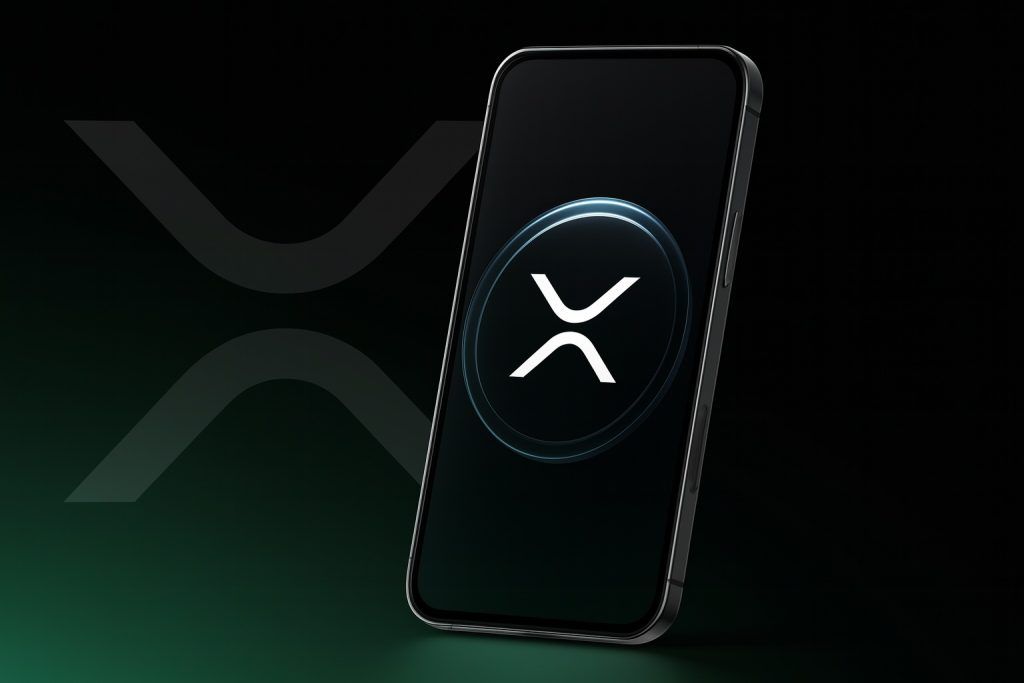Key Facts – October 18, 2025
- SOL at $185 after wild swings: Solana’s price hovers around $185 on October 18, 2025, down sharply from early-month highs above $250 but stabilizing after a volatile week [1].
- Crypto market cooling: The pullback isn’t isolated – Bitcoin is around $106K and Ethereum ~$3,855 amid broader profit-taking [2]. Solana still ranks among the top 5–6 cryptos with a $110B+ market cap (roughly 25% of Ethereum’s) [3].
- Surge then slump: A so-called “Uptober” rally saw Solana spike over $250 on ETF hype and institutional buying, then plunge by ~17% into the $180s when hype faded [4]. Key support at $170–$180 is now being tested as traders weigh what’s next [5].
- Why SOL moved:Spot ETF mania, big Wall Street bets on SOL, and robust network growth fueled the surge [6] [7]. But regulatory delays, macro jitters, and heavy profit-taking triggered the recent slide [8] [9].
- Experts divided: Bulls eye $300+ if catalysts pan out – some analysts predicted ~$312 this month on an ETF approval [10]. Yet others warn of downside risk, with one chartist even cautioning of a potential crash toward $40 if key support fails [11].
- Strong fundamentals: Long-term sentiment remains upbeat. Solana’s network usage is booming – it leads rivals in users and fees (>$5B annualized) [12] – and upcoming upgrades promise massive performance gains [13], keeping investors interested despite short-term volatility.
SOL Price Struggles After Uptober Surge
Solana’s price spiked above $250 in early October 2025 before a sharp pullback to the $180s. The chart shows SOL’s “Uptober” rollercoaster and key support levels around $170–$180.
After a spectacular rally earlier this month, Solana (SOL) now trades around $185 as of October 18, 2025 [14]. This week has been a rollercoaster: SOL fell below the $180 support on Friday, briefly dipping to two-month lows near $170 [15], before bouncing back modestly into the weekend. On Tuesday it had attempted to reclaim the $210 level but failed, underscoring the strong resistance Solana faces around $210–$220 in the short term [16] [17]. The recent skid put Solana roughly 17% below its early-October peak, though it remains up nearly 4x from around $50 a year ago [18].
Solana’s slide in mid-October came amid a broader crypto cooldown. Bitcoin dropped under the $110K mark – recently trading near $106,700 [19] – after touching fresh highs earlier in the month. Ethereum likewise pulled back to about $3,855 [20]. Both majors saw weekly declines (Bitcoin down ~5–10% from last week [21]) as investors took profits from a strong quarter. In other words, Solana’s retreat is part of a wider market breather after a furious rally. Even after the dip, Solana’s market capitalization is still in the ~$100–110 billion range, solidifying it as a top-six crypto asset (around 25% of Ethereum’s market cap) [22]. That highlights how far SOL has come: year-to-date it’s one of 2025’s best-performing large-cap coins, cementing what traders have dubbed the “season of SOL” [23].
From $250 to $185: What’s Behind Solana’s Volatility?
Solana’s dramatic rise and fall this month were driven by a mix of hype, big money bets, and news setbacks. In late September and early October, a wave of bullish catalysts ignited Solana’s surge. Major asset managers – including VanEck, Fidelity, and Grayscale – filed applications for the first spot Solana ETFs, with U.S. SEC decisions expected by mid-October [24]. This ETF frenzy sent sentiment soaring: one Bloomberg analyst even put approval odds near “100%” [25], and JPMorgan projected ~$1.5 billion of inflows if SOL ETFs launch [26]. At the same time, institutional investors poured in: for example, tech firm Forward Industries raised $1.65 billion to buy about 6.8 million SOL (over 1.3% of total supply), and Helius (dubbed the “Solana Company”) scooped up another ~2.2M SOL [27]. Galaxy Digital moved roughly $724 million in SOL off exchanges into custody as well [28]. These big bets by “smart money” signaled confidence in Solana’s long-term value, contributing to the buying euphoria.
Fueled by these developments, SOL rocketed from the low $200s to over $250 – its highest price since January – in the first week of October [29]. Crypto media labeled it “Uptober” as Solana notched double-digit daily gains. However, the rally hit a ceiling near Solana’s all-time high around $253, and once that technical resistance kicked in, momentum reversed hard [30] [31]. By October 10, stop-loss selling cascaded, and SOL plunged under $220 and even $200 in a single day [32]. One trigger was a bout of macro uncertainty: on October 11, unfavorable U.S. trade tariff news sparked a broad crypto sell-off, sinking Solana from about $222 to $184 in 24 hours [33]. Around the same time, a looming U.S. government shutdown threatened to delay the SEC’s ETF decisions on Solana (and other crypto funds), denting the bullish narrative. Indeed, by mid-October it became clear regulators had punted the Solana ETF decision down the road – a disappointment for traders who had bought the rumor [34].
Global market jitters added to the pullback. CoinDesk reported that over $536 million flowed out of crypto ETFs in early October, coinciding with a ~10% drop in Bitcoin’s price, as delayed Solana/XRP ETF approvals and geopolitical tensions made investors more cautious [35]. Some funds rotated into Bitcoin – perceived as a safer digital asset – or fled risk assets altogether. This rotation was evident in ETF data: in one week, over $2.7 billion poured into Bitcoin ETFs, even as altcoins like SOL, XRP and Dogecoin saw a price pullback of a few percent [36] [37]. In other words, Solana’s cool-off was partly a classic “buy the rumor, sell the news” scenario around the ETF hype, amplified by external events. “The season of profit redistribution among crypto holders continues,” noted one market strategist, pointing out that liquidity had been moving out of BTC into tokens like SOL during the rally, and can just as easily flow back [38].
Expert Views: Is Another Surge on the Horizon or More Downside Ahead?
The million-dollar question for investors is: what’s next for Solana’s price – a rebound to new highs, or a deeper correction? Analysts and industry figures are notably divided, with compelling arguments on both sides.
On the bullish side, many experts remain optimistic that Solana’s uptrend will resume if key catalysts fall into place. Matt Hougan, CIO of Bitwise Asset Management, recently praised Solana’s “speed, throughput and near-instant finality,” calling it “extraordinarily attractive” and even dubbing Solana “the new Wall Street” of tokenized finance [39]. Some traders note that capital flows into crypto have been increasingly SOL-oriented – veteran analyst Altcoin Sherpa observed Solana and a few others are “stronger bets” than Ethereum right now as new money chases high-performance chains [40]. This bullish sentiment is backed up by forecasts: JPMorgan strategists believe a spot ETF launch could spur roughly $1.5 billion of fresh investment into SOL [41]. In early October, Arca’s chief investment officer Jeff Dorman went so far as to call SOL “the most obvious long right now.” He argued that Solana could replicate Ethereum’s huge run-up earlier in 2025 – noting ETH’s price nearly tripled on ~$20B of new demand, and asking rhetorically, “What do you think happens to SOL” with only a few billion in inflows given Solana’s smaller market cap [42] [43]? In Dorman’s view, if $2–3B of anticipated ETF and institutional money hits Solana, it could “repeat the exact same playbook” that drove Ether to record highs [44]. Indeed, some analysts are eyeing $300+ price targets for SOL in the coming weeks. A TechStock² (TS2) report noted many chartists see a move to about $312 by late October, and possibly $345 if a spot ETF is approved and demand materializes [45]. Even longer-term bullish cases – once dismissed as fantasy – don’t seem so far-fetched now: scenarios of $500+ SOL by 2026 (floated when Solana was only $50) have entered the realm of possibility if the network’s growth continues [46].
However, not everyone is convinced that Solana’s rocket ride will continue unabated. The recent drawdown has put some analysts on alert for a potential deeper correction. One prominent crypto chartist, known by the handle Crypto Bullet, warned that the much-anticipated “Solana season” may “not happen” if technical patterns play out bearishly [47]. He points to Solana’s longer-term Elliott Wave structure, suggesting the token might have already topped out in a five-wave cycle back in January (when a frenzy around a meme coin briefly pushed SOL to an all-time high around $293) [48]. In this bearish scenario, Solana would be in a corrective “C wave” now – and could ultimately crash as much as 70–75% from current levels, potentially targeting the $40 range before a true bottom [49]. That is an extreme view, but it highlights the recent shift in sentiment. Another analyst, Ted Pillows, noted that the “Solana treasury” investment firms are in free fall, as the halt in big institutional buying removed a key pillar of support [50]. Without new large buyers, he argues, any price recovery will be difficult in the short term.
Still, several market watchers remain cautiously bullish so long as Solana can hold its current support floors. Chart analysts point out that $170–$180 has been a crucial support zone for SOL throughout the year [51] – a level of prior resistance that could now act as a springboard if it holds. “Solana is retesting a double support on the daily chart,” noted Crypto Yapper, another trader, who believes this could “set the stage for a 15–20% bounce” if buyers defend that range. In fact, Solana’s price is currently hugging the lower boundary of a two-month falling wedge formation, a typically bullish pattern – holding here could spark a reversal and a run back toward the wedge’s top around $210–$220 [52]. “As long as SOL stays above ~$170, the bullish scenario could continue,” one analyst tweeted, suggesting Solana could quickly revisit the $200+ zone on any renewed momentum [53]. In short, the battle lines are drawn: bulls are looking for a breakout revival (with an ETF approval or other good news as a potential catalyst), while bears are eyeing whether that $170 support cracks, which might open the door to further declines.
Solana’s Fundamentals Remain Strong Amid Market Jitters
While traders fixate on daily price moves, many investors take solace in Solana’s robust fundamentals and the broader implications for the crypto market. In terms of network activity and technology, Solana continues to shine. A recent report by Grayscale noted that Solana now leads all major smart-contract platforms in active users, transaction volumes, and fees generated [54]. The Solana ecosystem is hosting high-profile projects across decentralized finance (DeFi), NFTs, gaming, and even telecom – from popular DEXs like Raydium, to Helium’s wireless network, to the imminent migration of Sorare’s 5 million fantasy sports NFTs over to Solana [55]. This on-chain growth is translating into serious revenue: Solana applications and users are now generating roughly $425 million in fees per month, which is over $5 billion on an annualized basis [56] – a figure that underscores real economic value flowing through the network. Despite SOL’s low transaction fees (around $0.02 on average), the sheer volume of usage (millions of transactions and users) has made Solana a blockchain powerhouse by fee revenue, second only to Ethereum in many metrics.
Technologically, Solana’s performance and roadmap continue to impress developers and businesses. The blockchain finalizes transactions in about 12 seconds and produces blocks every 400 milliseconds, all while keeping fees dirt-cheap [57]. These capabilities have earned Solana a reputation for speed and scalability. And it’s poised to get even faster: a major upgrade called Firedancer, developed by Jump Crypto, is expected to go live soon and could boost throughput toward 100,000 transactions per second, further enhancing Solana’s capacity [58]. Additionally, Solana’s push into consumer devices (like the Solana Saga phone and upcoming Solana Mobile 2.0 kit) and its growing roster of 1,000+ active developers [59] indicate an ecosystem that’s expanding on multiple fronts. “Solana is a central part of the crypto ecosystem, but many mainstream investors are only just starting to learn about it,” Grayscale remarked in its analysis [60]. The entry of spot ETFs would only broaden that awareness, potentially bringing Solana into traditional portfolios globally.
For investors, Solana’s wild month highlights both the opportunities and the risks in today’s crypto market. On one hand, SOL’s ability to rally on significant news – and the heavy institutional interest in it – suggest that sentiment toward high-performance layer-1 blockchains is strong. The fact that firms are raising billions to invest in Solana, and that regulators are considering allowing mainstream ETF exposure, lends an air of legitimacy that would have been unthinkable during the last bear market. It’s no coincidence that Solana’s market cap is now roughly one-quarter of Ethereum’s [61]; some see it as a credible “next generation” network that could potentially narrow that gap further. On the other hand, this month’s reversal is a stark reminder of volatility. Even in a bullish year for crypto, an asset like Solana can swing 20–30% in mere days on shifting narratives. Traders who chased the rally above $240 quickly found themselves in the red when headlines turned negative. The broader market mood has also shifted to cautious in late October – macro uncertainties (from Federal Reserve moves to geopolitical events) and crypto-specific setbacks (like ETF delays) have introduced a risk-off tone after the early Uptober exuberance.
Bottom Line: At around $185, Solana sits at a crossroads. The coming weeks will be pivotal. A favorable development – say, regulators green-lighting a Solana ETF or a positive macro turn – could validate the bulls and send SOL climbing back toward the $250 range and beyond. Conversely, absent a catalyst, Solana will need to rely on its strong community and fundamentals to sustain prices, or risk further drift downward if crypto markets remain jittery. For now, many analysts advise watching that $170-$180 support zone carefully [62]. If Solana can hold the line and consolidate, it may build a base for the next move up. But if that floor falls out, opportunistic investors might get a chance at much lower prices – a scenario both exciting and nerve-wracking. As always in crypto, confidence can swing quickly. Solana’s October journey from euphoria to angst exemplifies that, but it also underlines why SOL is on every investor’s radar: few assets boast such a potent blend of cutting-edge tech, real adoption, and high-profile interest. Whether the next chapter for Solana is a breakout to new highs or a rough correction, it’s certain to influence the wider market sentiment in this dynamic “Uptober” for cryptocurrencies.
Sources: Solana price and market data from Investing.com [63] [64]; expert commentary and analysis from TechStock² (TS2) [65] [66], CoinDesk [67] [68], CoinPedia [69], TradingView NewsBTC [70] [71], AInvest [72], and CoinEdition [73].
References
1. www.investing.com, 2. coinpedia.org, 3. ts2.tech, 4. ts2.tech, 5. www.tradingview.com, 6. ts2.tech, 7. ts2.tech, 8. www.ainvest.com, 9. ts2.tech, 10. ts2.tech, 11. www.tradingview.com, 12. coinedition.com, 13. ts2.tech, 14. www.investing.com, 15. www.tradingview.com, 16. www.tradingview.com, 17. www.tradingview.com, 18. ts2.tech, 19. coinpedia.org, 20. coinpedia.org, 21. coinpedia.org, 22. ts2.tech, 23. ts2.tech, 24. ts2.tech, 25. ts2.tech, 26. ts2.tech, 27. ts2.tech, 28. ts2.tech, 29. ts2.tech, 30. ts2.tech, 31. ts2.tech, 32. ts2.tech, 33. ts2.tech, 34. www.ainvest.com, 35. www.ainvest.com, 36. www.coindesk.com, 37. www.coindesk.com, 38. www.coindesk.com, 39. ts2.tech, 40. ts2.tech, 41. ts2.tech, 42. www.coindesk.com, 43. www.coindesk.com, 44. www.coindesk.com, 45. ts2.tech, 46. ts2.tech, 47. www.tradingview.com, 48. www.tradingview.com, 49. www.tradingview.com, 50. www.tradingview.com, 51. www.tradingview.com, 52. www.tradingview.com, 53. www.tradingview.com, 54. coinedition.com, 55. ts2.tech, 56. coinedition.com, 57. coinedition.com, 58. ts2.tech, 59. coinedition.com, 60. coinedition.com, 61. ts2.tech, 62. www.tradingview.com, 63. www.investing.com, 64. www.investing.com, 65. ts2.tech, 66. ts2.tech, 67. www.coindesk.com, 68. www.coindesk.com, 69. coinpedia.org, 70. www.tradingview.com, 71. www.tradingview.com, 72. www.ainvest.com, 73. coinedition.com










